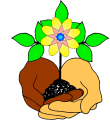Submitted by Gitie on 23 September, 2010 - 17:55
 Novelsit Resa Nelson continues her story about how the finches in her garden trained her.
Novelsit Resa Nelson continues her story about how the finches in her garden trained her.
The finches have been nesting on my balcony for years, and it's common to get two nests (at different times) in the same flower basket each spring. I'm always fascinated by the behavior of each family because they're so different.
It took the parents a while to train me when to go out and buy a basket (they let me know when they're ready to build a nest), as well as how I've communicated with a mother that I only want to water the plant and not harm the nest or eggs.
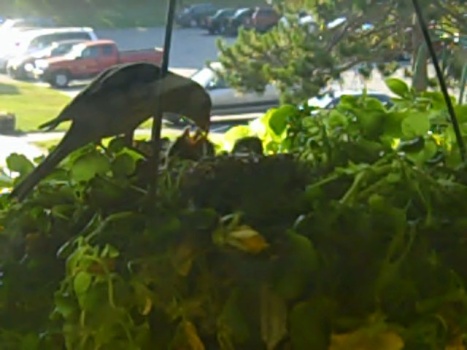
She was at first upset until I showed her exactly what I was doing, and then it was like watching a light bulb go off over her head and all I had to do from that point on was show the water bottle to her and she would fly off to let me water and stay calm instead of getting upset.

Submitted by Ron on 31 August, 2010 - 12:00
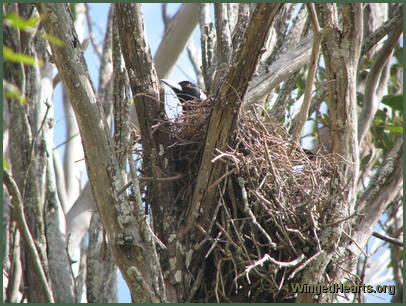 Yesterday Gitie and I went to see how Vicky and Bertie are doing this year on the nesting front. Although Vicky's nest is in line with our breakfast room, it is distant and we have not been able to set up the telescope this year. So imagine our delight when we found Vicky sitting proudly on the nest. The nest is in a tricky spot, so Gitie stayed by the road while I went through the paddock to the nesting tree. This is the tree that Vicky and Maggie purchased from a crow some years ago, giving the crow their old tree and nest in return, as well as rights to get food from their human friends (us) for a year). The crow made Vicky's old nest bigger and stronger, while Vicky lined the crow's nest with lots of soft material.
Yesterday Gitie and I went to see how Vicky and Bertie are doing this year on the nesting front. Although Vicky's nest is in line with our breakfast room, it is distant and we have not been able to set up the telescope this year. So imagine our delight when we found Vicky sitting proudly on the nest. The nest is in a tricky spot, so Gitie stayed by the road while I went through the paddock to the nesting tree. This is the tree that Vicky and Maggie purchased from a crow some years ago, giving the crow their old tree and nest in return, as well as rights to get food from their human friends (us) for a year). The crow made Vicky's old nest bigger and stronger, while Vicky lined the crow's nest with lots of soft material.

Submitted by Gitie on 1 July, 2010 - 00:53
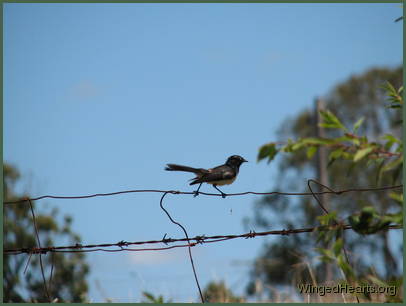 The 30 day blog challenge is over for those of us who live down under in Australia. It's already 1 hour into the 1st July (yes I am so addicted to writing for you that I'm still up at 1.00 am.)
The 30 day blog challenge is over for those of us who live down under in Australia. It's already 1 hour into the 1st July (yes I am so addicted to writing for you that I'm still up at 1.00 am.)
Thank you all so much for your interest and comments. I really appreciate all of you who made the time to read my stories and give me your feedback. I've had a wonderful experience sharing a little of what I have learned from these remarkable creatures with all of you.
We have so much more to learn and this can only be achieved if we share our stories and learn from examples.
I believe we all have an amazing bird story hidden in our memories.
What is Your Bird Story?
It's time to tell all the rest of us.

Submitted by Gitie on 27 June, 2010 - 01:50
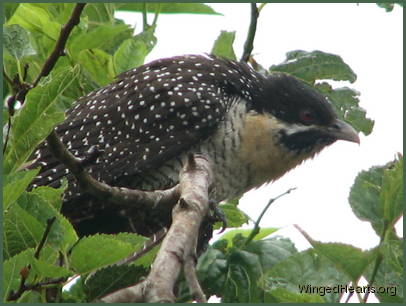 The first time a bird sees a camera, he/she may feel a bit unsure of the big thing we place next to our eyes that also makes a clicking sound. But in no time at all, they realise that the sound poses no danger to them. Once they become comfortable with the sound, they feel quite amused by our fondness for pointing this object towards them.
The first time a bird sees a camera, he/she may feel a bit unsure of the big thing we place next to our eyes that also makes a clicking sound. But in no time at all, they realise that the sound poses no danger to them. Once they become comfortable with the sound, they feel quite amused by our fondness for pointing this object towards them.
We use a Cannon S5 with a 1.5 teleconverter lens which is a reasonable sized equipment. To the bird it looks like we have added a big round black giant sized eye to our eye.
The birds have no idea what the camera really does for us, but that doesn't stop them from appreciating many things about it, in their classic style of observing our actions.

Submitted by Gitie on 27 June, 2010 - 00:13
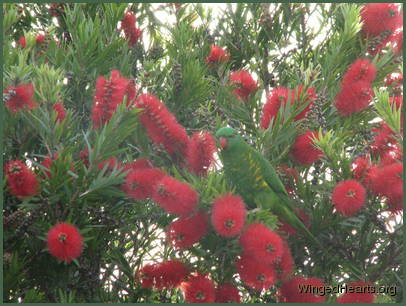 In order to understand birds, one has to pay attention with both ones ears and eyes. In other words we need to hear the sounds they are making while also following their actions. I call this 'Listening With Your Eyes'.
In order to understand birds, one has to pay attention with both ones ears and eyes. In other words we need to hear the sounds they are making while also following their actions. I call this 'Listening With Your Eyes'.
Birds love chattering and sharing the days news with each other. Every bird species has its own language. The different species don't have much difficulty following each other. The birds also have a range of soft almost inaudible 'mm', 'bb' type sounds and a lot of their communication is also non-verbal.

Pages



 Yesterday Gitie and I went to see how Vicky and Bertie are doing this year on the nesting front. Although Vicky's nest is in line with our breakfast room, it is distant and we have not been able to set up the telescope this year. So imagine our delight when we found Vicky sitting proudly on the nest. The nest is in a tricky spot, so Gitie stayed by the road while I went through the paddock to the nesting tree. This is the tree that Vicky and Maggie purchased from a crow some years ago, giving the crow their old tree and nest in return, as well as rights to get food from their human friends (us) for a year). The crow made Vicky's old nest bigger and stronger, while Vicky lined the crow's nest with lots of soft material.
Yesterday Gitie and I went to see how Vicky and Bertie are doing this year on the nesting front. Although Vicky's nest is in line with our breakfast room, it is distant and we have not been able to set up the telescope this year. So imagine our delight when we found Vicky sitting proudly on the nest. The nest is in a tricky spot, so Gitie stayed by the road while I went through the paddock to the nesting tree. This is the tree that Vicky and Maggie purchased from a crow some years ago, giving the crow their old tree and nest in return, as well as rights to get food from their human friends (us) for a year). The crow made Vicky's old nest bigger and stronger, while Vicky lined the crow's nest with lots of soft material. The 30 day blog challenge is over for those of us who live down under in Australia. It's already 1 hour into the 1st July (yes I am so addicted to writing for you that I'm still up at 1.00 am.)
The 30 day blog challenge is over for those of us who live down under in Australia. It's already 1 hour into the 1st July (yes I am so addicted to writing for you that I'm still up at 1.00 am.)  The first time a bird sees a camera, he/she may feel a bit unsure of the big thing we place next to our eyes that also makes a clicking sound. But in no time at all, they realise that the sound poses no danger to them. Once they become comfortable with the sound, they feel quite amused by our fondness for pointing this object towards them.
The first time a bird sees a camera, he/she may feel a bit unsure of the big thing we place next to our eyes that also makes a clicking sound. But in no time at all, they realise that the sound poses no danger to them. Once they become comfortable with the sound, they feel quite amused by our fondness for pointing this object towards them. In order to understand birds, one has to pay attention with both ones ears and eyes. In other words we need to hear the sounds they are making while also following their actions. I call this 'Listening With Your Eyes'.
In order to understand birds, one has to pay attention with both ones ears and eyes. In other words we need to hear the sounds they are making while also following their actions. I call this 'Listening With Your Eyes'.

